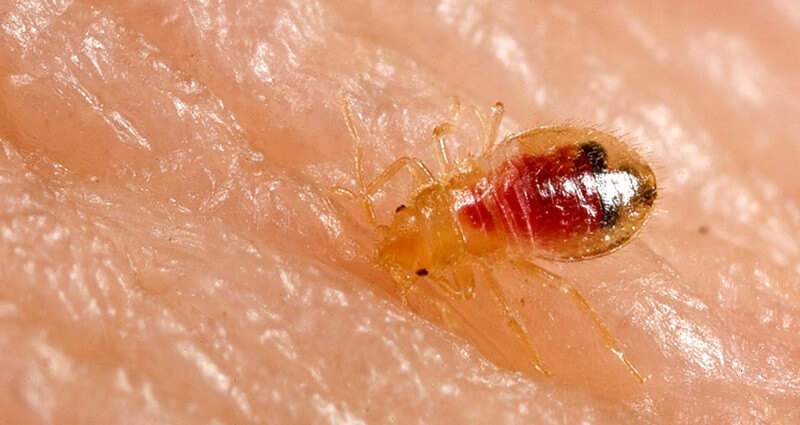Kings Cincinnati Bug Control Companies: Reliable Services
Kings Cincinnati Bug Control Companies: Reliable Services
Blog Article
Sorts Of Bug Control: Which Method Is Right for Your Invasion?
When encountered with a bug infestation, the selection of an appropriate technique for pest control is crucial in effectively managing the situation. From chemical therapies to biological solutions, there exists a variety of approaches that can be used to resolve different kinds of parasites. Each method features its own set of considerations and benefits, making the decision-making procedure a nuanced one. Understanding the nuances of each technique and examining their compatibility with the details pest infestation at hand is crucial for attaining long-lasting success in parasite administration. By exploring the numerous types of bug control techniques available, people can make informed choices tailored to their unique scenarios, making sure a much more sustainable and efficient end result in bug eradication.
Chemical Parasite Control
Chemical bug control entails making use of artificial or naturally obtained chemicals to manage and remove pest populations efficiently. This technique is generally made use of in agriculture, forestry, and property setups to combat a large range of insects, including bugs, weeds, and rats. Using chemical pesticides can give quick and targeted solutions to pest invasions, making it a preferred selection for numerous individuals and companies.
One of the crucial benefits of chemical pest control is its ability to swiftly eliminate parasites, lowering the risk of damages to plants, residential property, and human health and wellness. By utilizing specific chemicals that target certain parasites, this method can effectively manage problems while minimizing damage to advantageous organisms and the setting when used properly.
Nonetheless, using chemical bug control additionally increases problems regarding prospective adverse results on non-target species, water sources, and human wellness. It is important to comply with safety standards, use chemicals properly, and think about alternate bug control approaches to minimize these dangers and ensure lasting insect monitoring practices.
Organic Parasite Control
Biological insect control, likewise understood as biocontrol, uses living organisms to take care of and reduce insect populaces naturally. By utilizing the parasite's all-natural killers or pathogens, biological parasite control supplies a eco pleasant and lasting service to pest monitoring.

Mechanical Pest Control
Making use of hand-operated and physical techniques to handle parasite populations, mechanical bug control uses a different technique that does not depend on the use of living microorganisms or artificial chemicals. This technique entails making use of obstacles, catches, or other devices to physically hinder or get rid of pests. By obstructing insect entry factors or setting up traps to catch them, mechanical pest control can successfully lower invasions without presenting chemicals right into the setting.
One common instance of mechanical insect control is using mesh displays on doors and windows to stop insects from going into structures. This basic yet effective approach works as a physical barrier, keeping insects out while permitting correct air flow. In addition, tools like mousetraps, fly swatters, and ultrasonic repellents drop under the mechanical bug control group.
While mechanical bug control techniques can be labor-intensive and call for regular monitoring and maintenance, they offer a sustainable and eco-friendly service for handling pest problems. By incorporating various mechanical methods, building owners can develop a comprehensive bug control method that minimizes dependence on chemical pesticides.
Physical Insect Control

Some usual physical pest control techniques consist of making use of barriers such as screens or internet to stop insect entry, traps to record and eliminate insects, and hand-picking to literally remove parasites from plants or structures. Additionally, strategies like warm therapies can be used to manage pests like bed insects by increasing the temperature to levels that are dangerous to the pests.
Physical pest control is i thought about this specifically valuable in incorporated pest management (IPM) techniques, where several insect control techniques are combined for reliable parasite administration while decreasing using chemicals. By using physical insect control strategies, people can effectively resolve insect invasions with very little our website environmental influence.
Integrated Pest Monitoring
When implementing physical bug control methods as component of insect monitoring techniques, Integrated Parasite Administration (IPM) becomes a thorough method that leverages various strategies to effectively regulate pest populations. IPM concentrates on lasting prevention of pests through a combination of biological, social, physical, and chemical devices tailored to specific pest concerns. By integrating numerous control tactics, IPM intends to reduce the threats related to insects while also decreasing reliance on chemical remedies.
One secret facet of IPM is the focus on surveillance and analyzing pest populaces to figure out the most ideal control approaches. This aggressive approach enables early treatment and targeted strategies, leading to extra effective parasite management. In addition, IPM promotes eco-friendly methods by prioritizing non-chemical control methods and just utilizing chemicals as a last option.
Verdict

By making use of the parasite's all-natural predators or pathogens, organic parasite control supplies a lasting and eco pleasant service to best time of year to treat termites pest administration. - Kings pest control services Cincinnati oh
Making use of physical and hand-operated methods to take care of pest populaces, mechanical pest control uses an alternative approach that does not depend on the usage of living microorganisms or artificial chemicals.An efficient method to managing parasite populations without relying on chemical or organic techniques involves the usage of physical insect control methods.When applying physical insect control techniques as component of bug management methods, Integrated Insect Monitoring (IPM) emerges as a detailed approach that leverages different techniques to properly manage pest populaces. Chemical insect control entails the usage of chemicals, biological parasite control uses natural predators, mechanical pest control involves physical barriers, physical bug control includes trapping or removing insects, and incorporated insect monitoring combines multiple techniques for a holistic approach to pest control.
Report this page